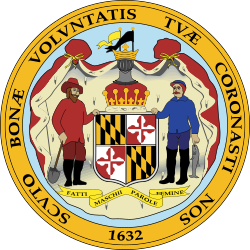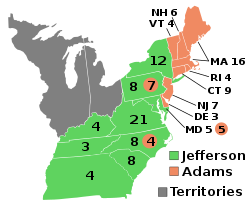1800 | |||||||||||||||||||||||
| |||||||||||||||||||||||
 County results
| |||||||||||||||||||||||
| |||||||||||||||||||||||
| Elections in Maryland |
|---|
 |
The 1800 United States presidential election in Maryland took place on an unknown date in 1800, as part of the 1800 presidential election. Voters chose ten representatives, or electors, to the Electoral College, who voted for president and vice president.
Contents
Early elections were quite different from modern ones. Voters voted for individual electors, who were pledged to vote for certain candidates. Often, which candidate an elector intended to support was unclear. [1] Prior to the ratification of the 12th amendment, each elector did not distinguish between a vote cast for president and vice president and simply cast two votes. [2]
Starting with the 1796 United States presidential election and ending with the 1824 United States presidential election, Maryland used an electoral district system to choose its electors, with each district electing a single elector. This method is similar to the way Nebraska and Maine choose their electors in modern elections.


